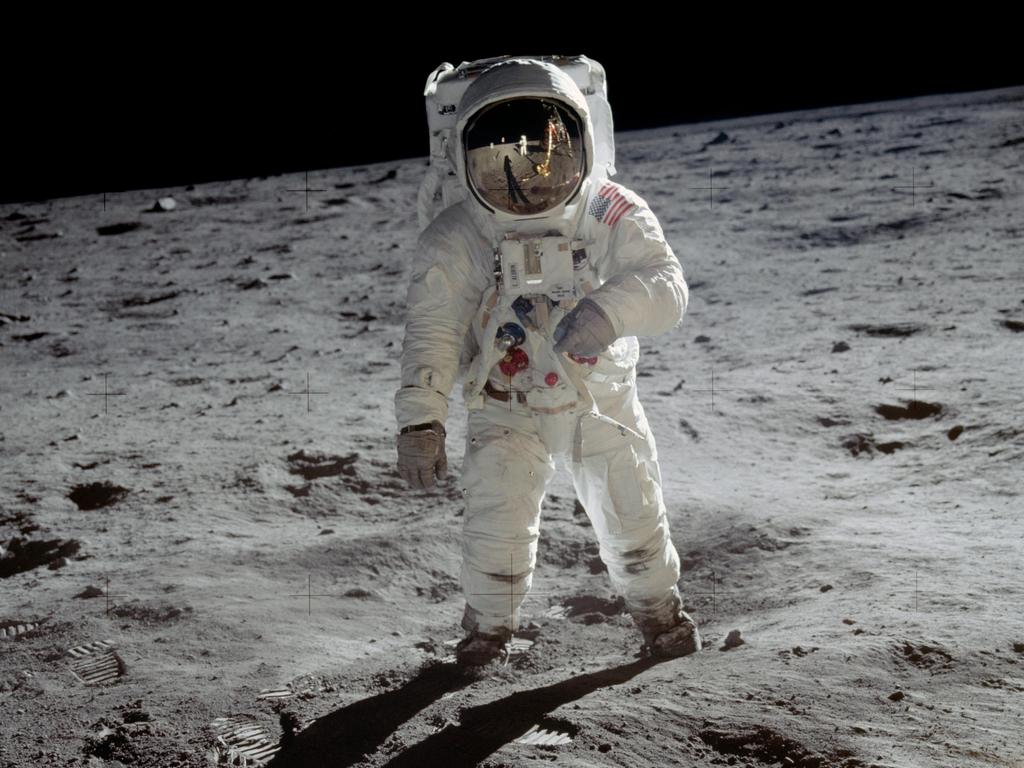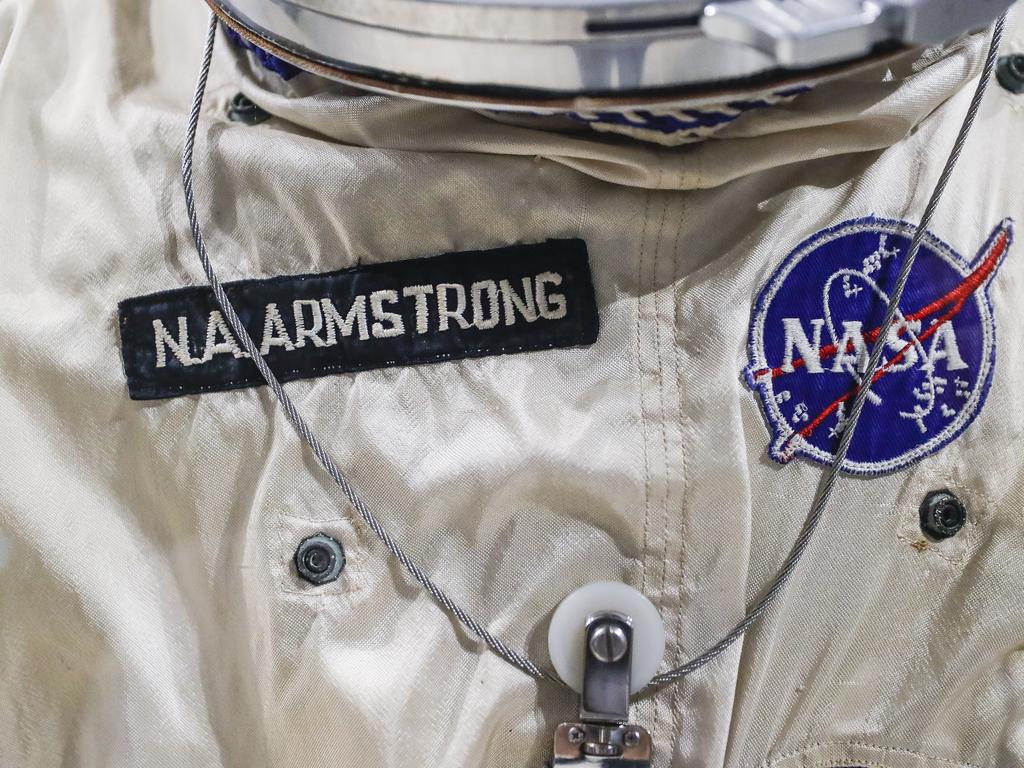Quick guide to Apollo 11 moon landing 50th anniversary
It has been half a century since Neil Armstrong and Buzz Aldrin walked on the moon. This is everything you need to know about the historic 1969 journey.
“One small step for man; one giant leap for mankind.”
These were the immortal words uttered by Neil Armstrong upon stepping onto the surface of the moon 50 years ago. But how did the inaugural moon landing mission come to be, and is mankind headed into space anytime soon?
WHEN WAS THE MOON LANDING?
On May 25, 1961, President John F. Kennedy issued NASA with a mission to send man to the moon, inevitably propelling scientific advancement and space discovery.
Addressing the US Congress, JFK claimed “no single space project in this period will be more impressive to mankind or more important for the long-range exploration of space; and none will be so difficult or expensive to accomplish.”
With JFK’s words, the race to the moon began. At the time, USA was competing with the Soviet Union to become the first nation to complete a manned lunar mission, spurred by the Cold War conflict. Both nations desired the accolades of supreme technological advancement, and space was the arena for such a battle.
The US would eventually claim victory. After eight years, NASA was ready to traverse the galaxy.

Spaceflight Apollo 11 began its voyage to the moon on July 16, 1969 at 1.32pm UTC, launched by a Saturn V rocket. On board were Commander Neil Armstrong, Command Module Pilot Michael Collins and Lunar Module Pilot Edwin “Buzz” Aldrin. The mission took over eight days to complete.
After reaching the moon’s orbit, the lunar module ‘Eagle’ separated from the command module, escorting Armstrong and Aldrin to the moon. Meanwhile, Collins remained on-board the Columbia, orbiting until his companions rejoined at the space rendezvous.
At 8.17pm UTC on July 20, the Eagle became the first manned vehicle to successfully land on the moon’s surface. However it wasn’t until six-and-a-half hours later that the historic moment would be made. At precisely 2:56:15am, Armstrong emerged from the spacecraft, placing the first footsteps onto the moon.
For two hours, Armstrong and Aldrin explored the moon’s surface, solidifying the US’ space dominance by planting the American flag into the lunar soil.
Armstrong’s televised image was watched around the globe, with the astronaut’s immortal words heard by an estimated 650 million people.
WHO WAS THE FIRST MAN ON THE MOON AND HOW MANY TIMES HAVE WE LANDED?
Throughout history, there have only been 12 men who have walked on the moon, across six separate lunar missions.
Neil Armstrong claimed the title of ‘First Man on the Moon’ with Apollo 11. Between 1969 and 1972, another 11 US men would follow Armstrong’s footsteps.
In 1970, Apollo 13 was launched in an anticipated third manned moon landing. Commander Jim Lovell and Lunar Module Pilot Fred Haise were scheduled to walk on the moon’s surface, however, a major malfunction prevented the lunar module from touching down. After an oxygen tank exploded, the module was crippled and power, heat and water supply required the spacecraft to immediately return to Earth.
Men who have walked on the moon:
- Neil Armstrong (Apollo 11)
- Edwin ‘Buzz’ Aldrin (Apollo 11)
- Pete Conrad (Apollo 12)
- Alan Bean (Apollo 12)
- Alan Shepard (Apollo 14)
- Edgar Mitchell (Apollo 14)
- David Scott (Apollo 15)
- James Irwin (Apollo 15)
- John Young (Apollo 16)
- Charles Duke (Apollo 16)
- Gene Cernan (Apollo 17)
- Harrison Schmitt (Apollo 17)
Since Apollo 17 (December 7-19, 1972), however, no one else has walked on the moon.
WHAT HAPPENED TO NEIL ARMSRTONG AND BUZZ ALDRIN AFTER APOLLO 11?
Prior to Apollo 11, Armstrong worked on NASA’s Gemini program, building his career as an astronaut until he planted his footsteps on the moon. Upon returning to Earth, however, he revealed he was not planning to return to space. Instead, Armstrong built a career teaching aerospace engineering at the University of Cincinnati.
After the infamous explosion of the Apollo 13 spacecraft, Armstrong was commissioned to work on the investigation into the mission, determining the cause of the failed moon landing.
In 1985, Armstrong embarked on a second exploration, this time to the North Pole alongside Mount Everest climber Sir Edmund Hillary.
In 2012, Armstrong underwent bypass surgery after developing blockages in his coronary arteries. After post-surgery complications, the famed astronaut died in hospital aged 82.

After landing on the moon, Buzz Aldrin was made the Commandant of the USAF Aerospace Research Pilot School. However, the Air Force’s interest in space was diminishing. Shortly after accepting the position, the astronaut training program was dropped, after which Aldrin elected to retire after 21 years of service.
In 2002, Aldrin was lured into meeting conspiracy theorist Bart Sibrel under the guise of an interview for a space-themed TV show. Sibrel ambushed him with a film crew, demanding Aldrin swear on the Bible on the validity of the moon landing. Aldrin responded to the confrontation by punching Sibrel in the jaw. Police declined to charge Aldrin, deciding he was provoked and had acted in defence.
Like Armstrong, Aldrin continued to pursue exploration opportunities. After reaching the North Pole in 1998, Aldrin took part in a 2016 expedition to the South Pole. At 86, he became the oldest person to reach the Antarctic destination.

HAVE OTHERS TRIED TO WALK ON THE MOON? WHY HAVEN’T WE RETURNED?
The US is the only nation to successfully complete a manned moon landing. However, Apollo 17 wasn’t the last planned space odyssey.
Three more Apollo missions were scheduled to take place after Apollo 17, however none reached fruition.
Missions Apollo 18, 19 and 20 were all scrapped due to expenses and shifting focus away from moon exploration. In fact, Apollos 16 and 17 almost didn’t launch either after former president Nixon suggested NASA redirect attention away from Apollo and towards the Space Shuttle and Skylab program. Nixon claimed Apollo 15 achieved such success that further Apollo missions weren’t warranted.
Many astronauts blame rising federal budget constraints and political hurdles as to why no one has walked on the moon in 46 years.
Manned space exploration remains an expensive venture; returning to the moon would cost an estimated $US133 billion to achieve.

In a 2015 congressional testimony, Apollo 7 astronaut Walter Cunningham claimed federal spending on NASA and space initiatives were largely responsible for why man hadn’t reached the moon since 1972.
“NASA’s portion of the federal budget peaked at 4 per cent in 1965. For the past 40 years it has remained below 1 per cent, and for the last 15 years it has been driving toward 0.4 per cent of the federal budget.”
According to Cunningham, manned exploration was too expensive for NASA’s dwindling budget, and the turbulence of the US political landscape could further hinder future moon landings.
In 2004, the Bush government assigned NASA the task of replacing the space shuttle. In response, the Constellation program was devised to return man to the moon. However, upon Obama’s election, there was a push to scrap the program, again redirecting focus, this time to the Space Launch System instead.
Between the shifting priorities, it’s estimated the US government has racked up around $US20 billion in losses due to cancelled NASA programs.
The future of NASA now rests in the hands of the Trump administration, and the race to the moon is very much back on. Yet, this time, a privately owned company may be the one to conduct the next manned mission.
Both Elon Musk and Jeff Bezos have their own plans for space discovery, with the SpaceX program, and Blue Origin respectively. NASA’s international rivals China, Japan and Russia are also gearing up to launch crewed explorations in the coming decade.

WHEN IS THE NEXT TRIP TO THE MOON?
The US Government this year again called for NASA to send a man to the moon, this time planning for another manned mission by 2024. The direction came from US Vice-President Mike Pence on behalf of President Donald Trump at the National Space Council meeting.
Now, NASA has its sights set on a new lunar frontier: the moon’s South Pole.
If successful, the future moon mission would take astronauts to a section of the moon not previously visited. More interestingly, the south pole presents a vital source of insight regarding further space exploration.
“We know the South Pole region contains ice and may be rich in other resources based on our observations from orbit, but, otherwise, it’s a completely unexplored world,” said deputy associate administrator of NASA’s Science Mission Directorate.
“The South Pole is far from the Apollo landing sites clustered around the equator, so it will offer us a new challenge and a new environment to explore as we build our capabilities to travel farther into space.”
The proposed moon mission has the potential to further preparations for a Mars odyssey and treks deeper into space.

WAS THE MOON LANDING FAKED?
Despite global celebration of the 50th anniversary of the moon landing, conspiracy theorists are very vocal proclaiming Armstrong’s leap into the history books was completely staged.
Theories ranging from US Government concealing alien life to the simple disbelief in mankind’s ability to traverse space are rife online. Sceptics openly claim the moon landing was and remains an elaborate hoax.
Space scientists have tirelessly refuted allegations the Apollo 11 mission was faked, asserting that we did in fact step foot onto the moon.



